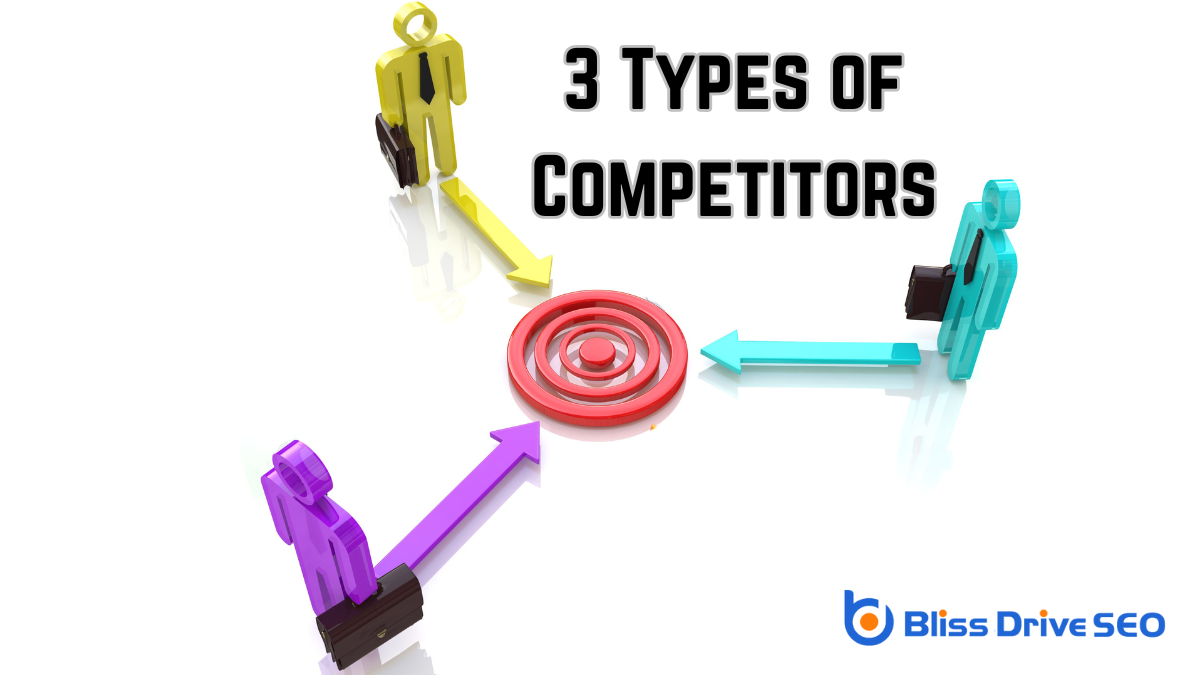Digital Marketing Services
Learn More About Us

When examining the competitive landscape, you encounter three distinct types of competitors: direct, indirect, and replacement. Direct competitors are those offering similar products or services to the same target market, making them the most obvious threat. Indirect competitors, on the other hand, meet customer needs with different solutions, subtly challenging your market share. Replacement competitors pose a unique challenge by providing alternatives that could render your offerings obsolete, often from unexpected sectors. Grasping these dynamics is essential to refine your business strategies and maintain a competitive edge. But how do you effectively assess and respond to each type?
Direct competitors are businesses that offer similar products or services to the same target audience as you. Imagine you're selling handmade candles online. Your direct competitors are other candle makers who also sell online, targeting similar customer demographics, such as people who enjoy artisanal home goods.
To thrive against them, you need to understand what they offer, their pricing, and any unique selling points they might have. This helps you identify what makes your products unique and how you can stand out.
To spot your direct competitors, start by conducting a simple online search using keywordsWords or phrases that users type into search engines to find information. related to your product. Look at the first few pages of search results to identify businesses that appear frequently.
Examine their websites, product descriptionsDetailed information about a product, including features, benefits, and specifications., and customer reviews. Pay attention to their marketing strategies, such as promotions or social media presence. This analysis provides valuable insights into how the market views them and where opportunities exist for you.

While direct competitors are easy to spot, indirect competitors mightn't be immediately obvious. They don't offer the same product or service as you, but they fulfill a similar need or solve a similar problem for your target audience. Understanding these competitors is vital because they can draw potential customers away from your business, even if they're not offering the same thing.
Imagine you run a coffee shop. Your direct competitors are other coffee shops. However, your indirect competitors could be juice bars, tea houses, or even fast-food chains that offer breakfast options. These businesses don't sell coffee, but they do provide an alternative way for customers to get their morning fix.
To identify your indirect competitors, think about the broader category of the need your product fulfills. Ask yourself, what other solutions do people have? Research where your customers spend their money when they're not spending it on your product.
This helps you understand the landscape and strategize accordingly. By being aware of indirect competitors, you can better position your business, enhance your offerings, and communicate your unique value propositionA statement that clearly explains the benefits of a product or service and why it is better than the... more effectively to your audience.
Although replacement competitors may not initially seem like a threat, they can greatly impact your business by offering novel alternatives that replace your product or service altogether.
These competitors don't just compete for a share of the market; they change the market dynamics entirely.
For instance, think about how digital cameras replaced film cameras. If you're in a business where technology is rapidly evolving, you need to be vigilant about these replacement competitors. They can emerge from different industries or sectors, introducing innovations that render your offerings obsolete.
To guard against them, you should constantly innovate and adapt. Keep an eye on trends and emerging technologies that could disrupt your field. Engage with your customers to understand their evolving needs and preferences.
Replacement competitors often succeed by meeting a need that you might've overlooked. By understanding and anticipating these shifts, you can stay ahead of the curve.
Don't just focus on your current competitors. Look at the broader landscape and consider how changes in technology, consumer behavior, or even regulations could introduce new threats.
In today's competitive market, understanding your competitors is crucial. You've got direct competitors who offer similar products to the same audience. Then, there are indirect competitors meeting similar needs with different solutions. Don't forget replacement competitors, who offer alternatives that can completely replace your offerings. By identifying these competitors, you can sharpen your unique selling points and adapt your strategies to stay relevant and ahead in an ever-changing business landscape. Stay vigilant and keep innovating!
